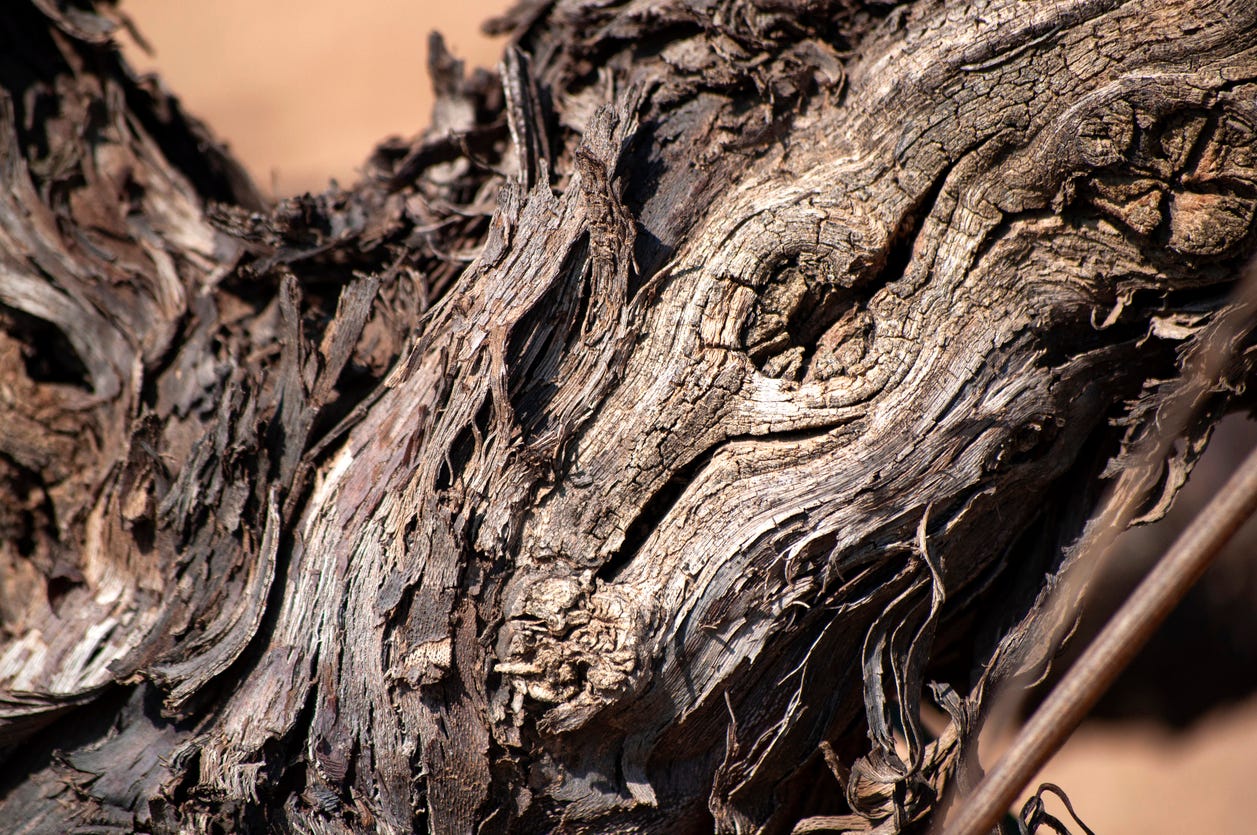A few weeks back Ben hit the keyboard with some thoughts on ageing wine. So as a follow up to that, we thought it would be a good idea to take a step back in the winemaking process and talk a little bit about old vines.
“Old vines” - viñas viejas in Spanish; vieilles vignes in French - is an increasingly popular term you might see on a wine label. It’s a reference to the age of the vines used to make the wine.
Whilst there isn’t official agreement as to what the minimum age should be for vines to be termed "old", many people tend to use 35 years as something of a benchmark.
Here at Desoutter & James, we’re big fans of old vines for several reasons. First of all, they're rare. Phylloxera, the plague that devastated European vineyards in the 19th century, wiped out whole swathes of vines. Which means it’s not that easy to find pre-phylloxera vines in Spain or France. And there have also been various initiatives over the years designed to address over-production and the infamous ¨EU wine lakes¨, which essentially paid farmers to pull out old vines. Put those together and you can see why old vines are rare.
Which leads on to the second reason we like old vines. Simply because winemakers who devote so much time and attention to preserving old vines - often when yields are smaller and economically perhaps the wines are less profitable – are helping preserve Spain’s winemaking heritage and are probably going to be equally fastidious about all aspects of their winemaking.
But there are more scientific reasons to pick up a bottle of wine made from old vines. We asked our good friend Bryan MacRobert, owner and winemaker at MacRobert & Canals in Rioja, to explain what makes old vines special.
As Bryan explains ¨what happens is that over time, as the plant gets older, its fertility reduces, and it takes longer for the sap to flow up to the top of the buds. You’re dealing with old cells, old wood, so the vascular flow is reduced. There's a lot of factors that make the old vines produce less and be less fertile.¨
“But at the same time, you've got a bigger plant, you've got more wood, you've got more starch reserves in the plant. So, in essence, you've got more resources and less production. And that allows you to have higher quality grapes.¨
Unlike human perhaps, age also helps vines become more stable. In a year with lots of drought stress - an increasing challenge with rising average temperatures in southern Europe - old vines tend to produce the same as in a year with lots of water. But a plot of young vines is up and down like a hormone-infested teenager – trying to grow more in wet years, getting stressed in drought years. Old vines just tick along, which helps you in the cellar when it comes to producing great wine.
In the bottle, old vines also help give good tannins, structure, volume and more complex aromas. All that character that been built up over the years in the vineyard gets transferred to the glass, making for more interesting drinking. As Bryan puts it more poetically ¨with old vines, you're bottling a place, a moment in time, the history of the vineyard. ”
Perfectly put Bryan.
Cheers!




